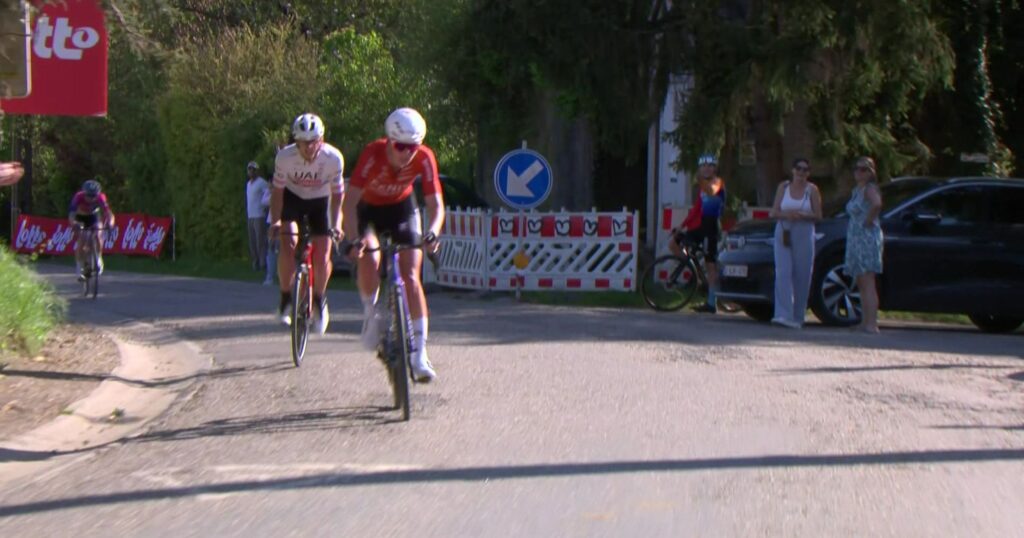In recent sporting events, a particularly striking incident unfolded during the Liège-Bastogne-Liège Femmes, a prominent professional cycling race dedicated to women competitors. This highly anticipated event took place in the beautiful and hilly landscapes of Belgium, well-known as part of a historic cycling heritage. The Liège-Bastogne-Liège, often referred to as one of the ‘Monuments’ of cycling, draws significant attention, not only from hardcore cycling enthusiasts but also from casual viewers and fans.
During the race, an unexpected scene drew the ire and astonishment of viewers alike. A spectator, rather audaciously, climbed onto the course and began to run alongside the leading female cyclist. This unusual behavior resulted in an amalgamation of confusion and amusement among those watching. The fan’s actions, which many deemed ‘absolutely ridiculous,’ quickly circulated through social media platforms, causing a stir in cycling communities. While the intent may have been to show support for the athletes, the execution of this support raised numerous concerns regarding race safety and sportsmanship.
As the female riders raced through the demanding terrain, the presence of an unauthorized individual on the course posed significant hazards. The Liège-Bastogne-Liège Femmes, known for its tough climbs and descents, challenges even the most skilled and seasoned cyclists. Cyclists must maintain a high level of concentration during the race, given the risks associated with steep slopes, narrow roads, and unpredictable weather conditions. The introduction of an external element, in this case, a fan running alongside, could have endangered both the cyclist’s performance and physical safety.
Such incidents highlight the delicate balance between fan engagement and athlete security during high-stakes sporting events. The cycling world has witnessed a myriad of occurrences where fan behavior has crossed lines, leading to discussions about how to ensure the integrity of competitive spaces. In light of this incident, race organizers may reevaluate security protocols, focusing on how to effectively manage crowd dynamics while fostering a supportive and enthusiastic atmosphere for both participants and fans alike.
The Liège-Bastogne-Liège Femmes is typically characterized by its fierce competition, drawing the best female cyclists from around the globe. This year, riders prepared tirelessly for the event, investing countless hours into training and strategy development, each one aiming for victory in one of cycling’s most storied races. The disruption caused by the fan points to the broader necessity for reverence for both the competitors and the established decorum expected in competitive sports.
Moreover, incidents like this sometimes overshadow the hard work and dedication of the female cyclists competing. While social media often emphasizes the moments of chaos seen on the course, it is imperative to relay the dedication, skill, and mental fortitude shown by the athletes. They spend their years perfecting their craft, enduring countless sacrifices to be at the front lines of competitions such as Liège-Bastogne-Liège. The skilled professionals who compete deserve the spotlight not just for their athleticism but also for the stories they embody regarding perseverance and resilience.
In conclusion, while the enthusiasm of fans is a crucial part of the vibrancy of sports events, actions like those witnessed during the Liège-Bastogne-Liège Femmes underscore the pressing need to maintain a respectful and safe environment for all participants. As cycling continues to evolve and gain popularity, it becomes increasingly essential for organizers, fans, and athletes to work collaboratively to celebrate the sport’s rich history while ensuring a commitment to safety and respect within the competitive arena.











